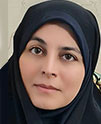| نویسندگان | امید اسدی نیلوان، سیدعلی موسوی طیبی، محمد مهرابی، هدی قاسمیه،مارکو اسکایونی |
|---|---|
| نشریه | STOCHASTIC ENVIRONMENTAL RESEARCH AND RISK ASSESSMENT |
| ضریب تاثیر (IF) | ثبت نشده |
| نوع مقاله | Full Paper |
| تاریخ انتشار | 2022-12-24 |
| رتبه نشریه | علمی - پژوهشی |
| نوع نشریه | الکترونیکی |
| کشور محل چاپ | ایران |
| نمایه نشریه | SCOPUS, JCR |
چکیده مقاله
The importance of groundwater potential mapping (GWPM) is eminent for the proper management of underpinning resources. This research applies artificial intelligence-based GWPM to the surroundings of Urmia Lake (Iran) which, unfortunately, has been facing severe drying in recent years. An artificial neural network (ANN) is assisted by an optimization algorithm, namely the water-cycle algorithm (WCA) to spatially analyze the relationship between environ- mental factors and the presence of springs. The proposed model goes through an iterative course to find the optimal contribution of the environment to the GWP within the study area. The results indicated the promising capability of the WCA-ANN for analyzing the spring patterns and also producing reliable GWPMs. Moreover, the WCA outperformed three benchmark algorithms called political optimizer (PO), equilibrium optimization (EO), and electrostatic discharge algorithm (ESDA). Area under the curve values of 0.761, 0.757, 0.801, and 0.767, as well as mean absolute errors of 0.205, 0.203, 0.186, and 0.201, respectively, have been obtained for the PO-ANN, EO-ANN, WCA-ANN, and ESDA-ANN. These outcomes indicate the greater competency of the proposed algorithm. The WCA-ANN and ESDA-ANN algorithms are both therefore recommended as capable methodologies for GWPM. Besides, the maps suggested in this study may help overcoming the Urmia Lake crisis by identifying wealthy groundwater resources in the nearby.
